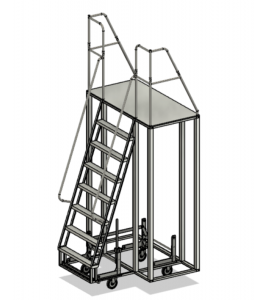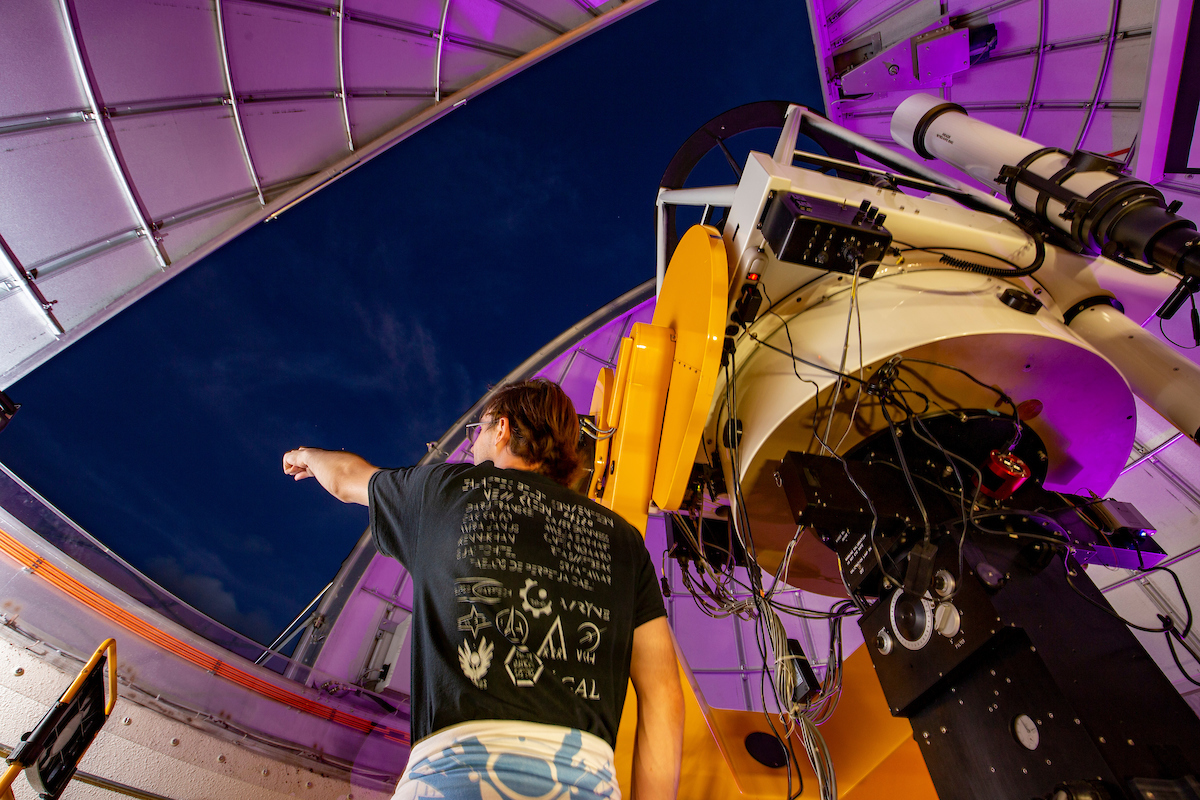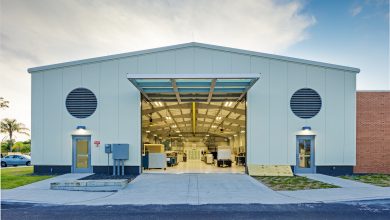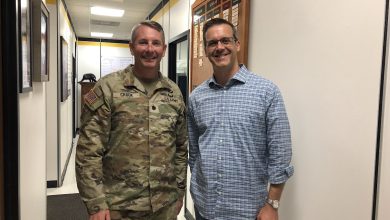4 Projects Prepping Seniors for Careers in Aerospace, Physics and Space Sciences
The university’s flagship project and a Panther rite of passage, the engineering and science student design and research program has existed in some form or another almost since the university’s inception in 1958.
A multidisciplinary capstone project for all science and engineering seniors, senior design is a yearlong course in which students bring a project from concept to completion, simulating a real-world work environment and culminating in the Northrop Grumman Engineering and Science Student Design Showcase, where teams present their work and field questions from peers, faculty, industry professionals and local leaders.
Due to the COVID-19 pandemic, this year’s seniors, like the rest of the world, had to adapt to unforeseen challenges, like in-person class cancellations and short-notice closure of the L3Harris Student Design Center. While most students’ projects look a little different from how they had envisioned them at the beginning of the year, we are proud to continue the tradition of showcasing them to their peers, community and, most important, prospective employers through the Northrop Grumman Virtual Student Design Showroom.
Prepare to be impressed—the showroom hosts descriptions, photos, video presentations, display boards and more for the more than 100 projects completed this year.
Here, we’ve compiled a list of
4 Projects Prepping Seniors for Careers in Aerospace, Physics and Space Sciences
1. Rescue Delivery (RED) System
Unmanned aerial systems have become increasingly utilized for supply delivery in emergency situations and in the health care industry. However, the most common air-based delivery methods face two main limitations: drop location accuracy and low delivery vehicle duration and range. To overcome these obstacles, a group of seniors developed the Rescue Delivery (RED) system.
“Using a combination of a fixed-wing mothership and a multirotor drone, the RED system will be able to conduct fast, accurate and autonomous delivery of a payload from a base to the rescue location and then return to the starting position,” the team says.
Learn more about developing the RED system and how it works.
Team Members
Basilio Caruso (team lead), Syed Faique Al Hussain, Murtaza Fatakdawala, George Chen, Akshata Patil, Michael Heath, Nishant Sriram Narayanan, Joao Nene, Andrea Swanson, Miguel Colmenares, Marley Scott
Faculty Advisor
Markus Wilde, assistant professor, aerospace, physics and space sciences
2. Astronomy on the Moon … and Beyond

The lack of atmosphere and light pollution as well as possibilities for data collection involving visible and radio interferometry would enable the future development of a lunar observatory to expand observational astronomy. However, the Apollo missions taught us that lunar dust is magnetic, abrasive, small and sticky, and over a long period of time, it poses harm to optical instruments.
In one senior design project, a group of students conducted initial research about dust collection and hands-on mitigation techniques at the Mars Desert Research Station. They then developed a basic electrode system for remote dust mitigation on extraterrestrial observatories.
Learn more about the group’s research and findings.
Team Members
Maria Galvez Gonzalez, Ryan Crouch, Robinson Raphael
Faculty Advisor
Saida M. Caballero-Nieves, assistant professor, aerospace, physics and space sciences
3. Unite Launch Alliance Support Team

At the request of United Launch Alliance, considered the nation’s most experienced space launch company with 132 consecutive launches and a 100% mission success rate, a group of students developed (1) an improved access stand and (2) a semipermanent umbilical protection system for the organization’s Mobile Launch Platform.
The first project’s final deliverables to ULA included a design and analysis report, comprehensive engineering drawings and the CAD assembly files. For the second project, the team developed two promising designs.
Get details about the development process and outcomes of both projects.
Team Members
Jad Matuk (team lead), Anthony Eppley, Jacob Kleinpeter, Antonio Masturzo, Thomas Roman
Faculty Advisor
Kimberly B. Demoret, assistant professor, aerospace, physics and space sciences, mechanical and civil engineering
4. Effects of Microgravity on Plant-Pathogen Interactions

“Increased agricultural productivity, as well as reducing crop loss to disease, is necessary to successfully feed a population that will likely surpass 11 billion by 2100. Improved methods for genetic engineering and better models of plant-pathogen interactions are crucial to food security,” says one senior design group focused on the effects of microgravity on plant-pathogen interactions.
Working with Armando Azua-Bustons of the Astrobiology Institute of Spain, the group designed a plan using the International Space Station’s Biological Research Canisters (BRIC) system to incubate seeds of a widely utilized model plant system with a strain of A. tumefaciens, and to then analyze the seeds upon their return to Earth.
“This would be the first occurrence of genetic engineering of plants in space and may significantly impact future efforts to develop food production systems and biotechnology solutions off-world.”
Check out the team’s preliminary designs and data.
Team Members
Alejandro Perez (team lead), Nathan Hadland, Hannah Blackburn
Faculty Advisor
Andrew Palmer, associate professor, biomedical and chemical engineering and sciences, ocean engineering and marine sciences
Impressed and ready for more? Check out:
- 5 Projects Prepping Seniors for Careers in Computer Engineering and Sciences
- 2 Projects Prepping Seniors for Careers in Mathematical Sciences
- 4 Projects Prepping Seniors for Careers in Biomedical and Chemical Engineering/Sciences
- 5 Projects Prepping Seniors for Careers in Ocean Engineering and Marine Sciences





